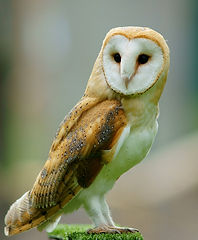Since April 2012, local communities have been able to produce Neighbourhood Plans for their local area, putting in place planning policies for future development and growth of their neighbourhood. These plans articulate the community’s vision for sustainability, improving the area, providing new facilities and allocation of key sites for specific kinds of development. They are subject to independent examination and public referendum, once adopted they form a key part of the Local Development Plan. This statutory status gives Neighbourhood Plans far more weight than other local planning documents, such as parish plans, community plans and village design statements.
The Stowupland Neighbourhood Plan Steering Group was set up in early 2015. Following a public meeting, in the village hall, to discuss proposals for a significant new residential development outside the existing village settlement boundary. The aim of the group is to provide leadership on what development is actually needed in the Stowupland, rather than leaving it to developers, who generally have very little detailed knowledge of local historical context, local environmental sensitivities or true community needs.
The group became a sub-committee of the Parish Council Planning committee in November 2015 following advice from Suffolk Association of Local Councils (SALC).
The Plan
Meet the Team
The group is made up of Parish Councillors and volunteers with differing backgrounds and skills. Everyone lives in Stowupland and gives up their time to meet at least once a month, attend village events, government meetings. and produce briefing information to make everyone aware of what is being done to ensure Stowupland remains a clearly identifiable, sustainable, vibrant village.
Jackie Ward - Chair
Cllr Ray Studd
Cllr Dave Pring
Cllr Keith Welham
Others - Debbie Balfour, Sarah Beck, Colin Board, Pat Hodgkins, Keith Hyland, Gill Jolly, Margaret Rose, Jon Ryan and Alan Wilkins
Meeting Minutes
Neighbourhood committee minutes and progress is reported at the monthly Full Parish Council meeting
Timeline
Neighbourhood plan submission target: September 2018 - Actual October 2018
Current project phase: SUBMISSION TO LOCAL PLANNING AUTHORITY FOR PUBLIC CONSULTATION
Make a Comment
On Fri 19 October 2018, Mid-Suffolk District Council commenced a formal six-week public consultation on the submission draft version of Stowupland Neighbourhood Plan. Written representation are invited during the consultation period will close at 4:00pm on Fri 30 November 2018.
Further details are set out in the attached letter and on the Council's website at: www.midsuffolk.gov.uk/StowuplandNP
Evidence Base
Recording Wildlife in the Village

A lot of people appreciate the countryside around us, and the wealth of wildlife you can see on a walk around the village. People remark on the hares (especially in spring when you can see groups ‘boxing’), the occasional deer, bats, and the birds, particularly owls, and visiting groups of long-tailed tits and fieldfare, etc. Did you know that there is somewhere that records sightings and keeps records, and how easy it is to contribute with your sighting?
The Suffolk Biological Records Centre is a one-stop-shop for biological records in Suffolk. Their database of over 2 million records is used to inform local authorities and conservation organisations about Suffolk’s natural history. They need a steady flow of records to maintain this service. Anyone can submit a wildlife sighting. Their website is www.suffolkbrc.org.uk where you can download a spreadsheet, and find out other ways of recording sightings. You can follow them on Twitter and join and upload photos to their Flickr group.
A good place to start if you want to identify the species that need recording is the Suffolk Biodiversity website www.suffolkbiodiversity.org.uk start with the BAP (Biodiversity Action Plan) Advice tab which has information about habitats, species, priority species, factsheets, and answers the question “what is biodiversity?” Have a look at the Priority species in Suffolk page too. Whilst a lot of people know that the great crested newt is protected, did you know that the brown hare is a priority species, and that the Barn Owl is a Suffolk BAP species? So, the next time you spot a barn owl, or a hare, a great crested newt, or any of the other priority species, let the Suffolk Biological Records Centre know – that way we can help protect wildlife and their habitats.
Jackie Ward










